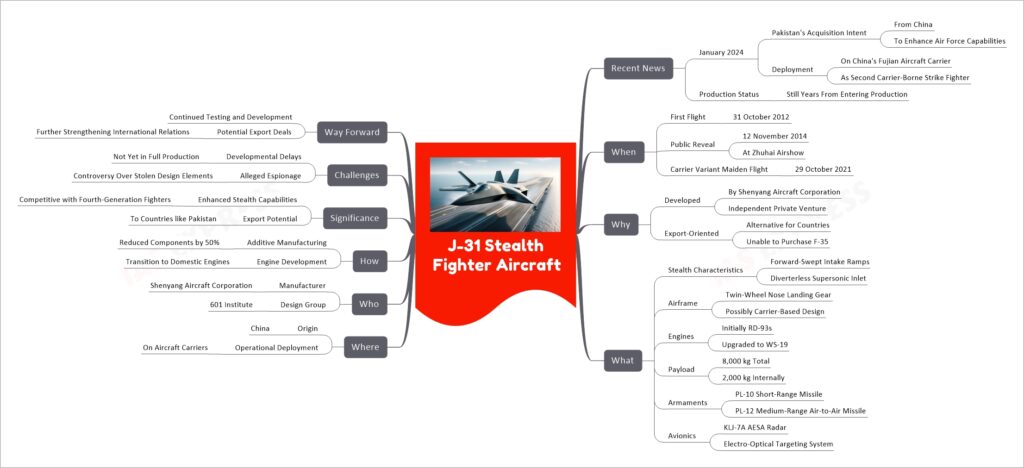J-31 Stealth Fighter Aircraft

The J-31 Stealth Fighter Aircraft, developed by China’s Shenyang Aircraft Corporation, is a fifth-generation, mid-sized, twinjet fighter. First flown in 2012, it remains in the prototype stage as of 2024. Designed independently as a private venture, it aims at the international market, offering an alternative to countries unable to purchase the F-35. Notable features include advanced stealth capabilities, a payload capacity of 8,000 kg, and the use of RD-93 engines initially, later upgraded to the WS-19. It has undergone several modifications for potential carrier-based operations. Despite its promising specifications, the J-31 faces challenges such as developmental delays and controversy over alleged espionage in its design process. The aircraft’s future involves further testing, potential exports, and a role in strengthening international relations for China.
If you like this post, please share your feedback in the comments section below so that we will upload more posts like this.

